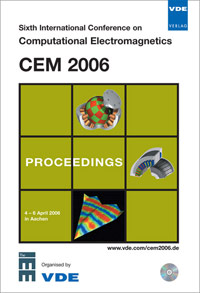Surface Wave Impedance Modelling with 2D Finite Elements
Conference: CEM 2006 - 6th International Conference on Computational Electromagnetics
04/04/2006 - 04/06/2006 at Aachen, Germany
Proceedings: CEM 2006
Pages: 4Language: englishTyp: PDF
Personal VDE Members are entitled to a 10% discount on this title
Authors:
Simpson, J. A. L. (BAE SYSTEMS Advanced Technology Centre, Sowerby Building, FPC 267, PO Box 5, Filton, BRISTOL BS34 7QW)
Abstract:
A methodology for deriving a surface wave impedance that can be used within an asymptotic UTD ray-tracing model of surface wave diffraction is described in this paper. Fock theory can be used to calculate electromagnetic surface wave propagation on non-conducting, convex surfaces that are represented by an impedance boundary condition. A numerical estimate of the surface wave impedance presented to TE electromagnetic radiation propagating over a conducting, convex surface uniformly coated with a thin, lossy layer can be found from a 2D finite element time domain analysis. Surface wave impedance values derived from the CEM modelling are subsequently plugged into an asymptotic model in order to produce comparative prediction data with which to validate the approach. Simple curve-fitting procedures can be used to characterise the impedance over a range of frequencies and material properties for which the impedance boundary approximation is valid. The material corrections for the TM polarisation state are an order of magnitude smaller than the standard Fock theory predictions for a perfectly conducting body and have therefore been neglected. The problem is relevant to the performance prediction of antennas installed on non-perfectly conducting, coated bodies on which impedance boundary conditions apply. Only surfaces with constant curvature that were uniformly coated with linear, isotropic homogeneous materials were considered for this study.


